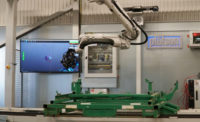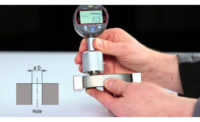I was recently retaught a lesson that, ironically, I teach for a living. The consulting firm I work in covers not only lean, but also consults and guides clients along with building and improving their quality management systems. Often, we help clients see the parallels between these two topics, and how they each serve the similar purpose of reducing waste, reducing variation and ultimately making it easier to deliver value to the customer. In this case, I was reminded of how important visual management tools are within reliable and repeatable processes.
It all started at the orthodontist. He told my daughter: “Here are two cases for your retainers. Make sure you use them. Please, please, PLEASE don’t just wrap them in a napkin. You don’t want to know how many of these we replace because people do just that, and they wind up getting thrown away.”
The words rang loudly in my head as I worked behind a restaurant in Pigeon Forge, TN, on a sunny 93-degree day, digging through three garbage bags of food waste looking for said retainers. Three of us worked for an hour but the retainers were not found.
About an hour before this, we were happily eating at this restaurant, enjoying the second day of our much-anticipated vacation. Before receiving our food, our youngest daughter wrapped her retainers in a napkin and slid them into my pocket. As she did so, she said, “Here are my retainers” but I didn’t hear her (This would come out later as we tried to determine root cause). As we got ready to leave, I reached into one pocket and found the balled-up napkin. Not thinking about what it was (and not feeling the retainers inside), I tossed it in with our dirty dishes.
We returned to the hotel, where my wife asked our daughter if she had her retainers in her mouth. She replied, “They’re in daddy’s pocket.” As soon as she said it, I could feel the blood run from my face.
So what does this have to do with lean or quality? Plenty. This same scenario plays out in shops across the globe, albeit with different players and different materials. I’ll admit that I’ve had to go dumpster diving at work more than once to retrieve something (parts, fixtures, etc.) that had been thrown away when it shouldn’t have.
As we practice lean, we put things like 5S and visual management tools into place. We train folks, sometimes multiple times, on these tools in order to “error proof” systems and processes, only to have them fail. We’re left scratching our heads, wondering how in the world we got the outcomes we did despite these efforts. So, we change the process, the tools and/or retrain operators and hope it doesn’t happen again. Sometimes we get lucky… and sometimes we have to dig through garbage.
The purpose of visual management is to quickly and accurately communicate standards (where things go, how they should be, etc.), and to be able to show quickly if an abnormal condition exists. The gas gauge in your car is a good, everyday example. At any given time you can see how much gas you have in the tank—that’s a simple visual. As the fuel level gets close to empty, there is usually a chime that sounds and a light in the dashboard that illuminates to tell you that you may want to stop and refuel soon. Those are visual management tools. My wife’s car’s “miles to empty” graphic will supposedly turn red once it’s within a certain range of hitting zero. That’s another good visual management tool, but I have yet to test it.
In our case, there were multiple failures. Using a napkin to wrap the retainers, putting it in my pocket without making sure I knew it was there, and me not questioning what it was or where it had come from before tossing it away. Had we used the retainer case that 1. The orthodontist had given us and 2. My wife had purposely brought along with us in her purse, this whole situation could have been avoided. We wouldn’t have lost three man hours digging through hot, smelly garbage, we wouldn’t incur the cost of a new set of retainers, and my daughter wouldn’t be saddled with feeling bad. A simple solution that we possessed would have avoided a lot of badness.
We see this in industry quite a bit. Parts/fixtures/tooling and even paperwork (routers, inspection reports) that have no set destination or home wind up getting put “here for right now.” Taking this approach is asking for trouble. One of my favorite questions to ask new clients is “When you clear out an area on the floor, how long does it stay clear?” As of today, no one has ever said anything longer than “about three minutes.” This is pretty typical, and is indicative of larger issues of either not having strong visual management, or just plain not using it. Either way, bad things can, and will, happen. Tools go missing, parts get lost or can accidentally miss a process and people have to spend time, money and effort to overcome those mistakes.
Having clear visuals that communicate abnormal conditions makes life a whole lot easier and more productive. Similarly, those visuals have to make sense and be easy to understand and follow. If they’re not, the tendency will be to avoid using them, which can sometimes lead you right to the dumpster, grasping at straws (literally), hoping to recover. Q




